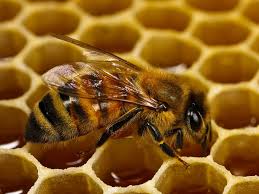Researchers report that as the world population increases and food demand has grown, globalization of trade has made the food supply more sensitive to environmental and market fluctuations. This leads to greater chances of food crises, particularly in nations where land and water resources are scarce and therefore food security strongly relies on imports. The study assesses the food supply available to …
Cut pesticide use to boost yields? It’s worked for millions of farmers in Asia and Africa – Jules Pretty and Zareen Pervez Bharucha
Pesticides are intended to be harmful. They kill pests, diseases and weeds. But some also harm humans and wildlife. Pesticides are a huge global business, worth around US$45 billion. Each year, 3.5 billion kilogrammes of pesticides are applied to food crops and their use is growing. Much use of this use is at best ineffective and at worst outright harmful. In recent …
New Studies Add to Growing Evidence That Notorious Pesticides Harm Bees – Nadia Prupis
Two new studies published in Nature on Wednesday show that neonicotinoid pesticides—or neonics for short—may be even more harmful to bees than previously thought. Those studies, Bees Prefer Foods Containing Neonicotinoid Pesticides and Ecology: Tasteless Pesticides Affect Bees in the Field, add to the growing list of evidence that neonics are a major contributing factor to bee population decline and reinforce the case for restricting …
Inside the Wonderful World of Bee Cognition – Where We’re at Now – Felicity Muth
As I wrote about in my last post, bees are capable of learning which flowers offer good nectar rewards based on floral features such as colour, smell, shape, texture, pattern, temperature and electric charge. They do this through associative learning: learning that a ‘conditioned stimulus’ (for example, the colour yellow) is associated with an ‘unconditioned stimulus’ (nectar). Learning simple associations like …
Flower-enriched farms boost bee populations
Flower strips sown into farmers’ fields not only attract bees but increase their numbers, new University of Sussex research has shown. A two-year study of farms in West Sussex and Hampshire in the UK found that England’s most common bumblebee species saw significant population growth where targeted, bee-friendly planting schemes were in place. A number of ‘agri-environment’ schemes have been …
Wild Bee Decline A Sign of Europe’s ‘Ecological Disaster’: Study
Nearly one in 10 European wild bee species is facing the threat of extinction, according to the first assessment of the continent’s bee populations, published Thursday. As environmentalists have long noted, bees and other pollinators are essential to the world’s food supply, farming system, and environment. However, both in Europe and the U.S., they have been threatened by industrial agriculture practices, insecticides, and …
Everything You Wanted to Know About the Bee Die-Off
For years, honeybees were dying, and no one knew why. There have been some glimmers of hope recently. The number of bee deaths wasn’t as dramatic last winter. Studies began pointing the finger at pesticides. But a simple fact remains: Bees still are on the decline, and no one’s sure why. They’re dying in large numbers, and scientists are scrambling …






